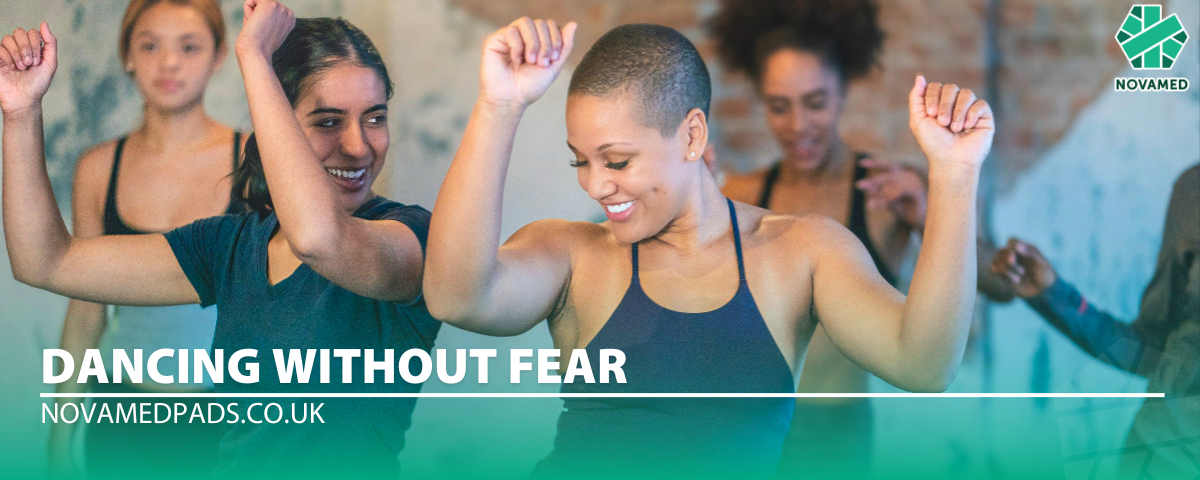
Dancing Without Fear: Managing Urinary Incontinence on the Dancefloor
Dancing is an art that radiates grace and power, demanding strength, flexibility, and absolute precision. But what do you do when the art you love leads to an unexpected, often hush-hush issue – urinary incontinence?
It’s not exactly a conversation you’ll hear in the studio, but the truth is, urinary incontinence – the unplanned leakage of urine – is more common among dancers than you might think. Those high-impact jumps, spins, and quick movements that captivate an audience can also strain the pelvic floor muscles, the unsung heroes that help maintain bladder control.
Why Isn’t Urinary Incontinence in Dancers Discussed More?

Many people feel embarrassed or nervous that they might leak while dancing, which can put them off participating. The reluctance to talk about it often stems from worries that drawing attention to the issue will lead to unwanted scrutiny. However, it’s a perfectly normal experience that many share.
The Physical and Mental Impact of Stigma
There is a common belief that having this condition makes people stand out in a negative way, despite how natural it is. With dance often placing individuals in the spotlight, the fear of leakage can amplify anxiety, making performers nervous and increasing the risk of mistakes. Dance should be a source of joy and distraction, not a reminder of a condition.
The Types of Incontinence Dancers Face
Dancers can experience two main types of urinary incontinence:
- Stress Urinary Incontinence (SUI): The most common type, often referred to as the "dance floor dilemma." This occurs when increased abdominal pressure, such as during a grand jeté or a forceful landing, triggers a leak due to weakened or strained pelvic floor muscles.
- Urge Urinary Incontinence (UUI): Characterised by sudden, intense urges that can catch a dancer mid-routine, leading to involuntary leakage. This type is often associated with an overactive bladder and can be triggered by specific movements or stimuli.
Should Dance Schools Address Pelvic Floor Health?
Dance instructors and dancers should be able to communicate openly about such conditions. It’s a natural issue affecting many, and being able to discuss it allows teachers to better tailor lessons to individual needs. Most instructors want their students to enjoy classes, so the more open the dialogue, the easier it becomes to manage.
Surprising Facts Worth Highlighting

Around 14 million people in the UK have some degree of urinary incontinence, meaning that many individuals, even those you know, maybe dealing with it. More than one dancer in your class may have experienced the same issue.
Prevalence of Urinary Incontinence in Elite Dancers

A 2002 study revealed that more than 50% of elite female athletes and dancers had experienced urine loss during training or daily activities. Specifically, 43% of ballet dancers reported incontinence, commonly triggered by high-impact movements like jumping.
Notably, 95.2% experienced leakage during training sessions compared to 51.2% during competitions. This may be due to the increased adrenaline and stress present in competitive settings, which can affect bladder control.
Dancing as a Therapeutic Solution

Research highlights that dance can be more than a challenge for those managing incontinence; it can also be part of the solution. A 2017 study found that belly dancing focusing on pelvic movements significantly increased pelvic floor muscle strength and vaginal pressure, proving effective as a non-surgical treatment.
Similarly, a 2014 study incorporated dance into a pelvic floor muscle training programme with virtual-reality rehabilitation, showing significant reductions in urine leakage and improved quality of life. Participants particularly enjoyed the dance component, which motivated them to remain committed to their training.
Taking Charge: Managing Incontinence

Dancers dealing with urinary incontinence should remember they are not alone, and solutions exist to regain control. Consulting a pelvic floor physiotherapist can be transformative, providing targeted exercises and strategies to strengthen these muscles and improve bladder control.
Overlooked Solutions and Approaches

Pelvic floor exercises can be highly beneficial, alongside monitoring diet and fluid intake. Discreet products like pads can offer protection without drawing attention to the condition. Incorporating dance-based pelvic exercises, like belly dancing, could be an enjoyable and effective supplement to traditional pelvic floor training.
The Role of Social Media and Online Communities

Breaking the stigma attached to incontinence through open discussion can help people come to terms with it and feel less concerned about how they’re perceived. When dancers and athletes share their stories, it can inspire and reassure others that managing the condition while pursuing their passion is possible.
Keep Dancing Without Fear

Urinary incontinence is more common than many realise, and you might not be the only dancer in your class dealing with it. Don’t let it hold you back. With professional support, a proactive approach, and innovative solutions like dance-based therapy, managing symptoms and dancing with confidence is entirely achievable.
Your love for dance should never be overshadowed by fear – so keep leaping, spinning, and moving, knowing you’re prepared.
Bladder and bowel incontinence may be caused by conditions which can be treated medically. Please consult your physician for medical advice and guidance.




